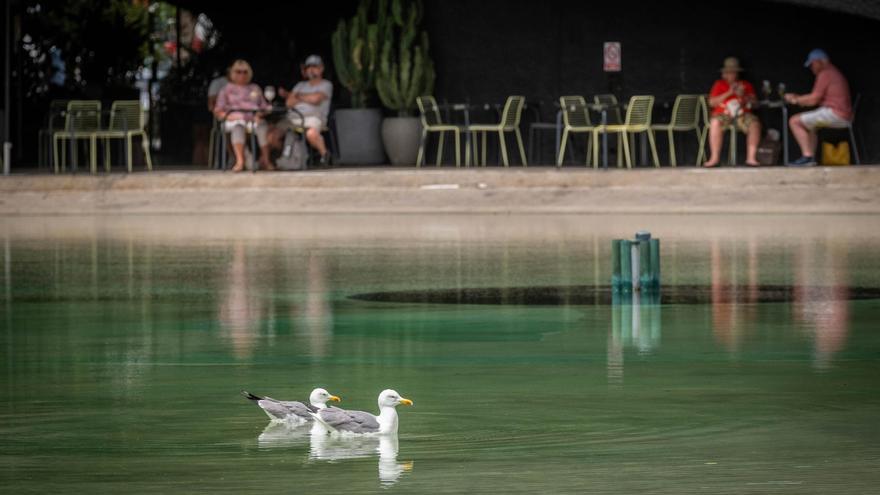
A new wave of heat is looming over the Canary Islands, just a month after experiencing an extraordinary episode of high temperatures. However, this time, thermometers will not rise as much as they did in early April. In this second spring heat event, the arrival of a Saharan air intrusion will raise temperatures to 30 degrees in some points of the Archipelago, especially in the southern-facing midlands.
An anticyclone located between the Iberian Peninsula and the British Isles will cause this weather change, triggered by a drastic shift in wind direction. Thus, for a few days, the Canary Islands will no longer be influenced by the moist and cool trade winds, but will be covered by a warm and dry air mass coming from Africa.
The change began to be noticeable from this past weekend. In some inland areas such as Las Tirajanas or La Aldea de San Nicolás (both in Gran Canaria), temperatures reached highs of over 30 degrees on Sunday. In Tenerife, stations like the one at the southern airport or the one located in Las Mercedes, also recorded temperatures close to these 30 degrees, but did not exceed them.
A Month of Calima
Despite having survived a new episode of suspended dust, Canarias has already accumulated 30 days with calima since the beginning of the year. According to Aemet, between January and April, one of the longest calima episodes in the last 12 years in the Archipelago has also occurred. An episode that began in the penultimate week of January and lasted until the first week of February, for a total of 18 days. “It is the second longest since, at least, 2012,” emphasized Aemet on its social media.
Temperatures will continue to rise at least until Wednesday. “The thermal anomaly will be positive and, although we will not have a heatwave as intense as in April, average temperatures may be between one and two degrees above normal,” insists the delegate of the State Meteorological Agency (Aemet) in Canarias, David Suárez. The heat will subside from Thursday, but temperatures will not return to normal until after the next weekend.
However, this Saharan air intrusion will not be accompanied this time by suspended dust. “Significant calima is not expected,” confirms David Suárez. As the scientist explains, the winds over the African continent will not be strong enough to carry the calima, so the cloud of suspended dust will stay at the doors of the African coasts.
In the case of the study published by the CSIC, moreover, the suggestion is made of the relationship that this phenomenon may have with climate change. Not in vain, reports by the Intergovernmental Panel on Climate Change (IPCC) have concluded that this atmospheric configuration could occur more frequently on a warmer planet.
















